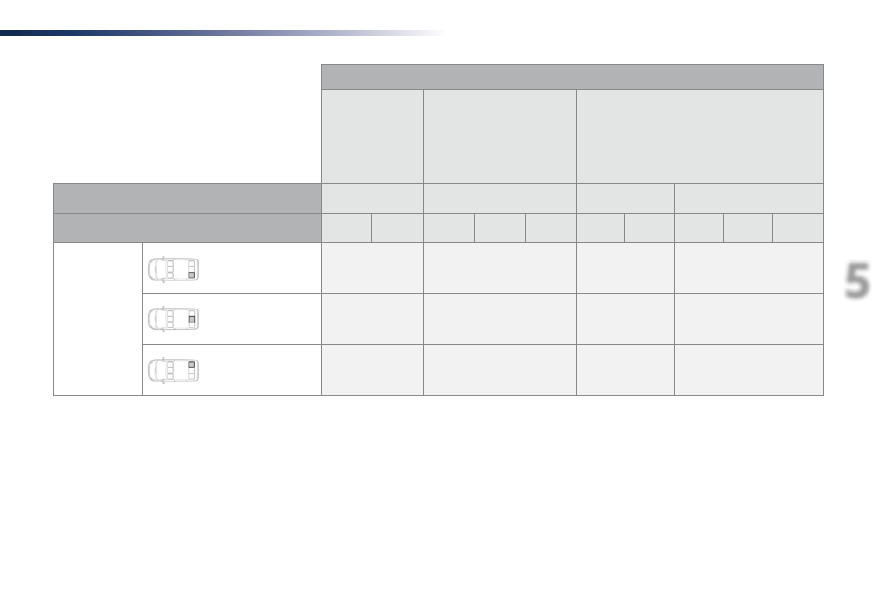Peugeot Expert VU (2016 year). Instruction - part 13

191
5
Safety
Expert_en_Chap05_securite_ed01-2016
Weight of the child / indicative age
Less than 10 kg
(group 0)
up to approx.
6 months
Less than 10 kg
(group 0)
Less than 13 kg
(group 0+)
up to approx. 1 year
From 9 to 18 kg (group 1)
From 1 to 3 years approx.
Type of ISOFIX child seat
Cot (1)
rearward facing
rearward facing
forward facing
ISOFIX size category
F
G
C
D
E
C
D
A
B
B1
Row 3
Left-hand
outer seat
X
X
X
IUF, IL
Centre seat (b)
X
X
X
IUF, IL
Right-hand outer seat
X
X
X
IUF, IL
(a) Consult the legislation in force in your
country before installing a child seat on
this seat.
(b) the seat can be installed centrally in the
vehicle; it then prevents the use of the
outer seats.
(1) the installation of a cot on this seat may
prevent the use of one or both of the other
seats in this row.
(2) Installation possible only behind the
driver's seat.
(3) Installation possible only behind the
driver's seat with individual passenger
seat.